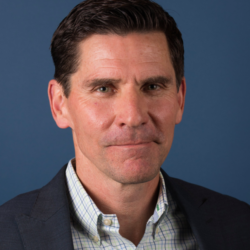California’s First Fourth of July
California’s first Fourth of July was celebrated in the rugged hills of present-day San Bernardino, when the region was still under Mexican rule. On that day in 1842, Daniel Sexton, a Louisiana-born carpenter and early American settler, raised an American flag and celebrated Independence Day with an unlikely group: Native Americans of the local Cahuilla (“ka-WE-uh”) tribe. That event — eight years before California achieved statehood — is recognized as the earliest documented Fourth of July observance in California.
Born in Louisiana in 1818, Sexton arrived in Mexican California in 1841 and went to work for cattle rancher Colonel Isaac Williams on the Chino Ranch. Williams did not mislead Sexton: life was hard, Williams said, but among the hardest things was the unvarying diet of a cattle rancher: he was tired of eating meat, he said. What a body really needed was vegetables.
But raising cattle while growing vegetables is a challenge. Williams and Sexton would need sturdy fences, and fences required wood. Williams dispatched Sexton and two Cahuilla men into the forests that swirled like a green skirt around the San Bernardino Mountains that rose sharply above them.
The trio had not traveled far when one of the Native Americans was bitten by a rattlesnake and died. The two remaining members of the party continued up the foothills and onto the mountains’ flanks. They felled trees, loaded them onto a cart, and began their return journey when the second Cahuilla worker was fatally bitten by yet another rattlesnake. Local history has it that the dying man shrieked, “El Diablo!” His agonizing death led Sexton to give the place the name it has today: Devil Canyon.
Despite their bad luck around Sexton and snakes, the Cahuilla community came quickly to trust Sexton. He was by all accounts a respectful and supremely competent frontiersman. He hired some of the men to cut timber on the flanks of San Gorgonio Mountain and to haul and harvest it in the mill that Sexton built at the base of the mountain.
It’s important to note that, contrary to contemporary beliefs about early California, the indigenous people of California often welcomed Europeans — and European Americans — as allies in their centuries of struggle with other native peoples. Nearly a century before Sexton, the Spanish missionary Padre Francisco Garcés and Captain Juan Bautista de Anza blazed a trail from Mexico City into what’s now the American southwest. As they approached the Colorado River basin, they rode through land that was rich with natural resources, especially water. But despite that abundance, the land was nearly devoid of human settlements. In the midst of natural plenty, there was a surreal quiet. Their native scouts explained that local tribes fought so ferociously for control of the region that permanent habitation was nearly impossible.
The Spanish had two options: go to war against all indigenous tribes and insist on imperial authority or offer peace. War was costly. Diplomacy was relatively cheap.
“As political outsiders, [the Spanish] were well positioned to negotiate and sustain peace agreements between the river peoples,” writes the historian Naomi Sussman. “And, of course, permanent Spanish outposts would guarantee the peace accords’ survival. Spaniards thus used mediation to claim an integral if auxiliary role in Native geopolitics.”
Citing Cahuilla oral traditions and subsequent archeological finds, early twentieth-century historians note the commonality of war with nearby tribes — including the Luiseño, Diegeño, Mohave, and Yuma people. These battles for resources in California’s arid deserts could be extinction-level events for the losers as well as the winners. Sexton’s appearance in that place seems to have been welcomed. Contemporary sources said he acquired such influence that he could have raised a militia of 500 warriors in a few hours.
That growing intimacy — that trust among the Cahuilla and Sexton — revealed itself early. Within a year of his arrival in San Bernardino, Sexton’s Cahuilla coworkers reportedly asked him whether Americans observed holidays as the Californios did. Sexton responded by organizing that first Fourth of July. With the Cahuilla gathered, he raised the America flag he’d made and led what later accounts described as a joyful commemoration of American independence.
Sexton served as a courier during the Mexican-American War just four years later. He went on to help develop Southern California’s early lumber and tin industries. And when he married, it was to the niece of Cahuilla leader Juan Antonio. She was called Pacifica, a name that suggests “peace” or even “peacemaker” and seems today, more than a century later, so poetic, so suitable to their legacy — a legacy that did not end when the couple were ultimately laid to rest, side by side, in the city of Colton. They lay there still in unmarked graves.
Remembering Sexton’s celebration of America with the Cahuilla people — remembering Daniel and Pacifica Sexton – is a small act of celebration, a solemn protest against the fashionable avalanche of misinformation, land acknowledgments and critical race theory schemes aimed at forgetting our shared history on this island in the land.
Will Swaim is president of the California Policy Center and co-host with David Bahnsen of National Review’s “Radio Free California” podcast.
